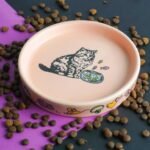Ever run your fingers through your cat’s fur and wondered about its unique texture, length, or pattern? From silky Persian coats that demand daily brushing to the distinctive Rex curls that feel like lamb’s wool, cat fur types are as diverse as our feline friends themselves. Whether you’re considering adopting a new kitty or simply curious about your current companion’s coat, understanding the different cat fur types can help you provide better care for your pet.
In this comprehensive guide, we’ll explore the fascinating world of cat fur types, patterns, and textures to help you become a more knowledgeable pet parent.
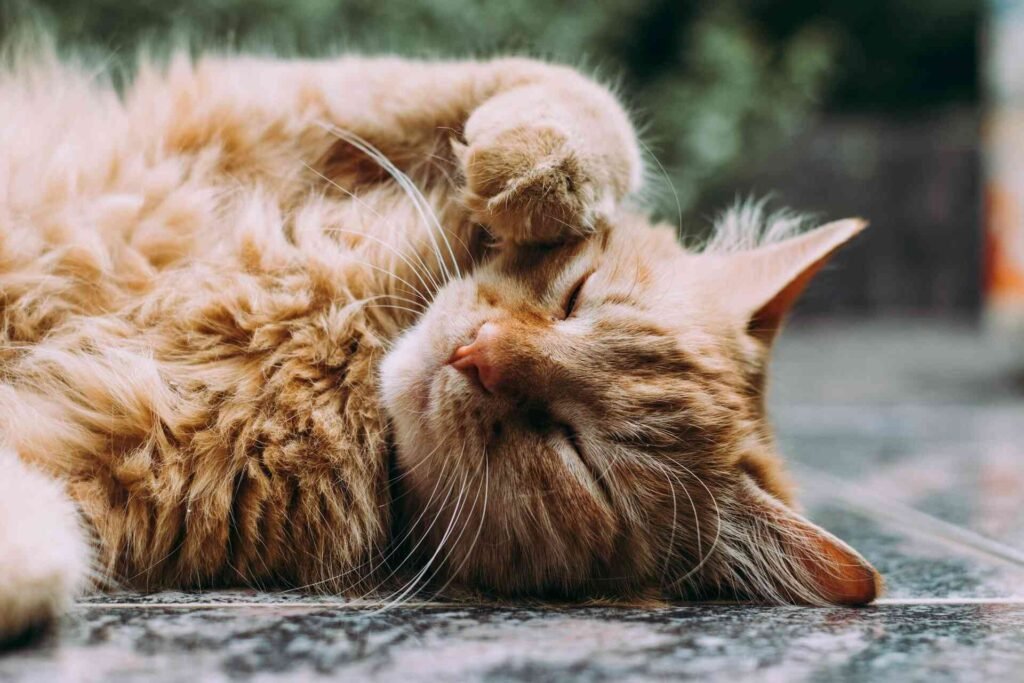
The Science Behind Cat Fur Types
A cat’s coat is more than just beautiful to look at, it serves essential functions for our feline friends. Cat fur provides insulation against both cold and heat, offers protection from environmental hazards, and even helps with sensory perception through specialized hairs.
Most cats have three types of hair making up their coat:
- Guard hairs: The outer, coarser layer that provides protection and creates the visible pattern
- Awn hairs: The middle layer that provides insulation
- Down hairs: The soft undercoat that keeps cats warm
The combination and characteristics of these hair types create the distinct cat fur types we recognize. Let’s dive into the main categories!
Primary Cat Fur Types
Short-Haired Cats
Short-haired cats feature close-lying fur that typically measures less than 2 inches in length. These coats are among the most common in domestic cats and are characterized by:
- Low maintenance grooming needs
- Smooth texture against the skin
- Visible coat patterns
- Less shedding compared to longer-haired breeds
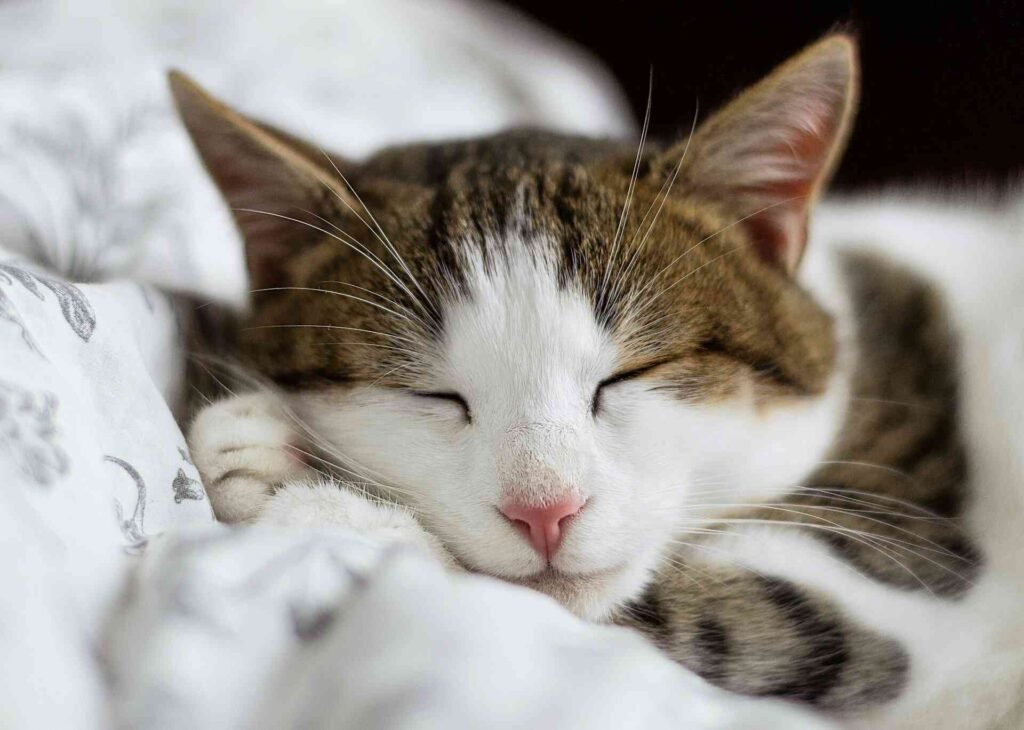
Breeds like the American Shorthair, Abyssinian, and Bengal showcase classic short-haired coats. These cats typically need only weekly brushing to remove loose hair and distribute natural oils, making them ideal for busy pet parents or those who prefer minimal grooming responsibilities.
For first-time cat owners we often recommend short-haired breeds for their easier maintenance. Of course, that doesn’t mean these cats don’t shed, they absolutely do, especially during seasonal changes! Regular brushing with a rubber curry brush or grooming glove helps manage the loose fur.
Medium-Haired Cats
Sitting between short and long-haired varieties, medium-haired cats offer a beautiful compromise:
- Fur length typically between 2-3 inches
- Moderate maintenance requirements
- Often have plush, dense coats
- May have slight ruff around the neck
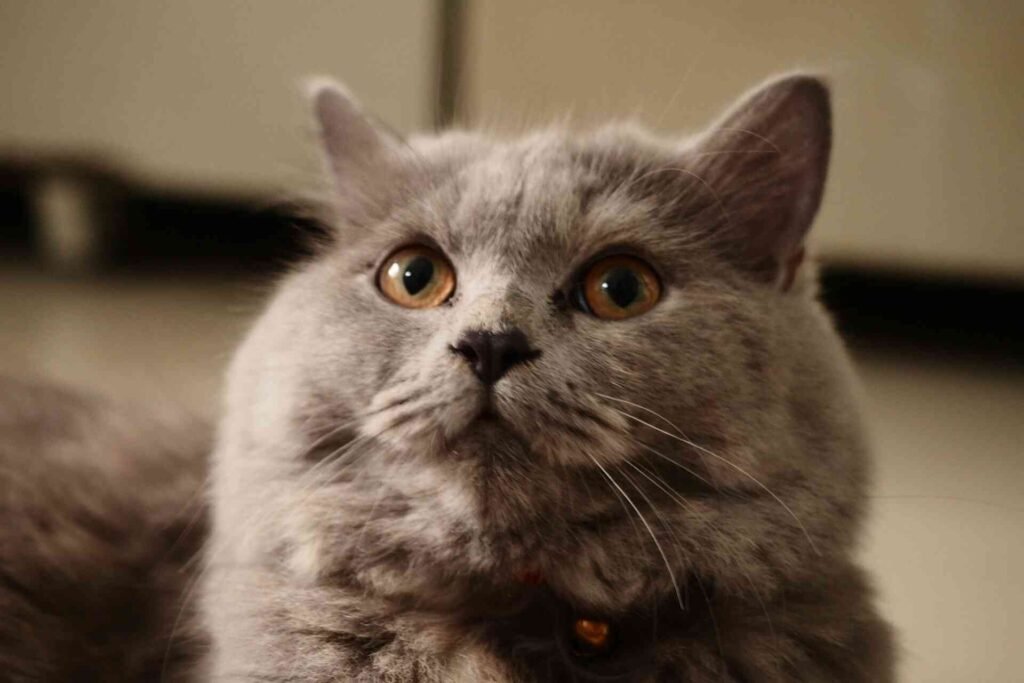
Maine Coons, Norwegian Forest Cats, and Ragdolls frequently display medium-length fur. These cats benefit from brushing sessions 2-3 times weekly to prevent mats and minimize hairballs, which can cause digestive issues.
Long-Haired Cats
With their flowing, luxurious coats, long-haired cats are stunning but demand significant grooming attention:
- Fur extending beyond 3 inches in length
- Daily brushing requirements
- Prone to matting and tangles
- Higher risk of hairballs
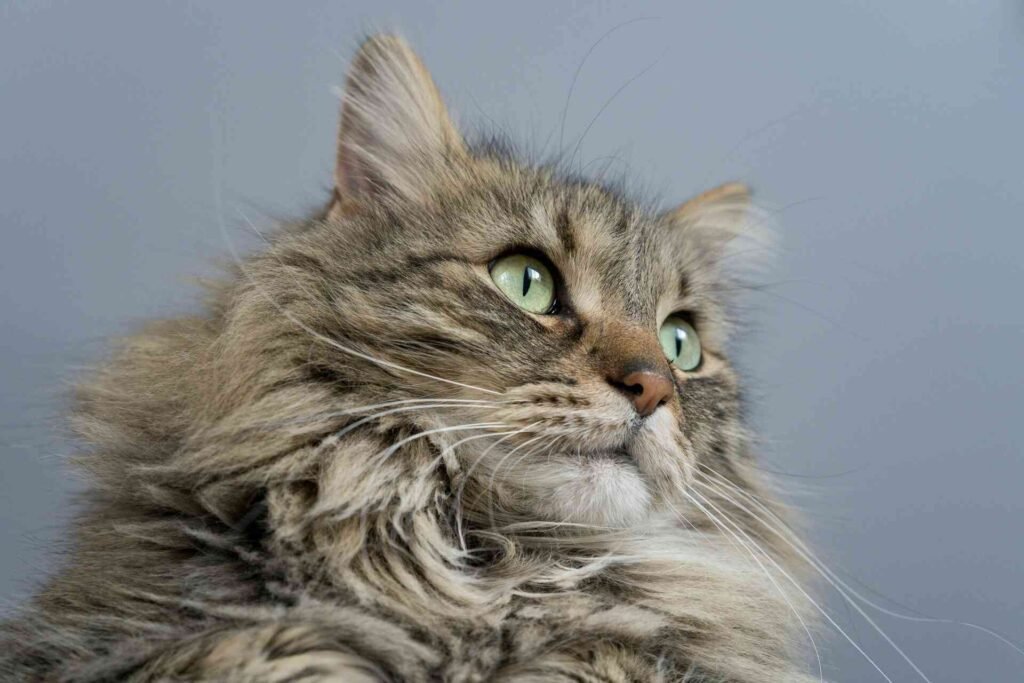
Persian, Himalayan, and some Maine Coon cats showcase the classic long-haired coat. These majestic felines require daily attention with specialized combs and brushes to prevent painful mats and excessive shedding around your home.
Specialized Coat Types
Beyond the basic length categories, several specialized cat fur types deserve mention:
Rex (Curly) Coats
Characterized by crimped, wavy hair caused by a genetic mutation, Rex coats feel like velvet or lamb’s wool. Devon Rex and Cornish Rex cats are the most familiar examples, with their distinctive soft, curly fur that requires gentle grooming with specific tools designed not to damage their delicate coat structure.
Hairless Cats
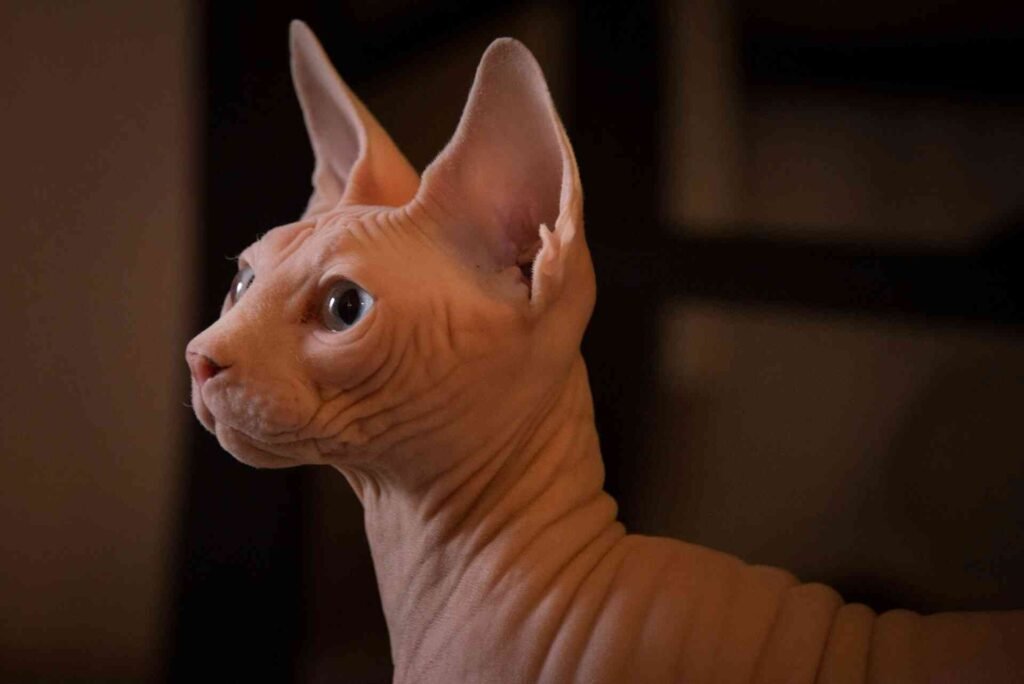
Despite the name, truly hairless cats like the Sphynx often have a fine peach-fuzz covering their skin. These cats need special care including:
- Regular bathing to remove skin oils
- Sun protection
- Warmer environments
Wirehair Coats
American Wirehair cats display a unique crimped coat that feels coarse and springy to the touch. Their distinctive genetic mutation creates individual hairs that are hooked or bent, creating a wiry texture that’s remarkably resistant to matting.
Caring for Different Cat Fur Types: A Comparison
| Fur Type | Grooming Frequency | Tools Needed | Special Considerations |
|---|---|---|---|
| Short | 1-2 times weekly | Rubber curry brush or grooming glove | Less intensive but still needs regular attention |
| Medium | 2-3 times weekly | Slicker brush, wide-tooth comb | Watch for mats forming under legs and behind ears |
| Long | Daily | Slicker brush, de-matting tool, wide-tooth comb | Requires consistent routine to prevent painful mats |
| Rex | Weekly (gentle) | Soft bristle brush or grooming glove | Avoid harsh tools that could damage delicate fur |
| Hairless | Weekly bathing | Special cat-safe moisturizers | Needs temperature regulation and sun protection |
Grooming sessions also present the perfect opportunity to check your cat’s overall health, including dental hygiene.
Seasonal Changes in Cat Fur
Most cats undergo seasonal shedding, typically heavier in spring and fall as they adjust to temperature changes. You might notice your short-haired cat suddenly leaving fur everywhere during these transition periods! This natural process helps your cat maintain a comfortable body temperature throughout the year.
Indoor cats living in climate-controlled environments may shed more evenly year-round, while outdoor cats tend to follow more pronounced seasonal patterns.
Frequently Asked Questions About Cat Fur Types
Does My Cat’s Fur Type Affect Their Personality?
While breed characteristics can influence personality, fur type alone doesn’t determine your cat’s temperament. That said, some correlation exists between certain breeds and personality traits. For example, breeds with Rex fur types often tend toward playful, social personalities, while many long-haired Persian cats display calmer demeanors. However, individual cats vary greatly, and environment and socialization play much larger roles in personality development.
How Do I Determine My Mixed-Breed Cat’s Fur Type?
For mixed-breed cats, observe the length, texture, and growth pattern of their coat. Check for an undercoat by gently blowing into the fur to see the layers. While you may not identify a specific breed, you can determine if your cat has short, medium, or long fur and whether they have a single or double coat, which helps establish appropriate grooming needs.
Can A Cat’s Fur Type Change Over Time?
A kitten’s coat often differs from their adult fur, typically becoming fuller and sometimes longer or different in texture as they mature. Additionally, certain health conditions, nutritional deficiencies, or aging can alter a cat’s coat quality and appearance. Significant changes in your adult cat’s fur should prompt a veterinary visit to rule out underlying health issues.
How Does Diet Affect My Cat’s Coat?
Nutrition plays a crucial role in maintaining healthy skin and fur. Diets rich in high-quality protein and essential fatty acids support optimal coat condition. If your cat’s fur appears dull, brittle, or excessive shedding occurs, consulting your veterinarian about potential dietary adjustments might help improve coat health.
Should I Shave My Long-Haired Cat For Summer?
Generally, we don’t recommend shaving cats unless medically necessary. A cat’s coat provides natural temperature regulation and protection from sunburn. Instead, increase grooming frequency during warmer months to remove excess undercoat. For severely matted cats, professional grooming by a veterinarian may be necessary.
Conclusion
Understanding your cat’s fur type goes beyond simple aesthetics, it informs how you’ll care for them throughout their life. From the minimal maintenance of a short-haired tabby to the dedicated daily grooming routine required for a Persian, each coat type brings its own joys and challenges.
By tailoring your grooming approach to your cat’s specific fur type, you’ll help maintain their health, comfort, and the special bond you share. After all, those quiet moments spent brushing your cat often become treasured opportunities for connection, whether your feline friend sports the plush coat of a Maine Coon or the elegant short fur of an Abyssinian. Remember that regardless of coat type, all cats benefit from regular grooming attention.
Looking for more? Explore our Cat Hygiene section for more tips like this, visit the Blog for fun and insightful reads, or browse our full Cat Category for everything feline-related, from care to comfort.
Disclaimer: This article is for informational purposes only and does not substitute for professional veterinary advice. Always consult your veterinarian for diagnosis and treatment tailored to your cat’s individual needs. Please verify current product information directly on the retailer’s site before purchasing.
References
- Eduardo Eizirik, Victor A David, Valerie Buckley-Beason, Melody E Roelke, Alejandro A Schäffer, Steven S Hannah, Kristina Narfström, Stephen J O’Brien, Marilyn Menotti-Raymond, Defining and Mapping Mammalian Coat Pattern Genes: Multiple Genomic Regions Implicated in Domestic Cat Stripes and Spots, Genetics, Volume 184, Issue 1, 1 January 2010, Pages 267–275, https://doi.org/10.1534/genetics.109.109629
- González-Ramírez, M. T., & Landero-Hernández, R. (2022). Cat Coat Color, Personality Traits and the Cat-Owner Relationship Scale: A Study with Cat Owners in Mexico. Animals, 12(8), 1030. https://doi.org/10.3390/ani12081030
- Cat coat genetics. https://en.wikipedia.org/wiki/Cat_coat_genetics
Check out our most recent articles!
- Cats and Snow: Why Some Love It and Others Don’tSnow isn’t just uncomfortable for many cats, it’s a complete sensory overload. From cold paw pads to wet fur and changed landscapes, winter challenges feline comfort in unexpected ways. Learn how to recognize stress signals and create cozy alternatives for snow-averse cats.
- Christmas Names for Cats: From Classic to Creative Holiday IdeasNaming your holiday cat goes beyond festive fun. Discover why Christmas-inspired names age beautifully, spark instant connections with fellow pet lovers, and capture the warmth cats bring to our homes during the most magical season of the year.
- How to Keep Your Cat From Drinking Christmas Tree WaterYour cat’s obsession with Christmas tree water isn’t just annoying, it’s genuinely dangerous. From harmful bacteria to toxic additives, that festive reservoir poses real health risks. Discover practical solutions that protect your pet without sacrificing holiday cheer.
- Best Cat Toys for Christmas: The Ultimate Guide to Holiday JoyNot all Christmas gifts end up under the tree, some get batted across the floor at 3 AM. Explore the wonderful world of holiday cat toys that match your feline’s personality, from plush companions for cuddlers to high-tech options for the eternally energetic.
- Are Fake Christmas Trees Safe for Cats? A Holiday Safety GuideThat beautiful Christmas tree might look festive to you, but to your cat, it’s an irresistible climbing gym with built-in toys. Find out whether artificial trees are truly safer for cats and discover the hidden dangers lurking in your holiday decorations.
- The Best Christmas Gifts for Cats That’ll Actually Get Used (Not Ignored)Not all Christmas gifts land on the nice list with our feline friends. Discover which presents actually spark joy in cats and which ones end up gathering dust under the couch by New Year’s Day.
- Do Cats Eat Less in Winter? How Cold Weather Affects Your Cat’s AppetiteWinter brings more than just cold weather, it can completely change your cat’s eating habits. From bored indoor cats to outdoor ferals fighting to survive, discover what’s really driving those appetite changes and how to respond appropriately.
- Are Humidifiers Good for Cats? A Complete Safety & Health GuideNot all humidifiers are cat-safe, and some common practices could be toxic. Learn why cool mist beats warm mist, why essential oils are dangerous for felines, and how proper humidity levels between 30-50% support your cat’s breathing and coat health.
- How to Protect Leather Furniture From Cats (Without Losing Your Mind)Leather furniture and cat claws seem like natural enemies, but they don’t have to be. Learn why your cat is drawn to that expensive couch in the first place, and how simple redirects can save your furniture while keeping your cat’s natural behaviors satisfied.
- The Best Material for Cat Bowls: Protect Your Cat from BacteriaStainless steel, ceramic, or plastic, which material keeps your cat healthiest? We break down the science behind cat bowl materials, revealing why some harbor bacteria and others last decades without compromising your feline’s wellbeing.










